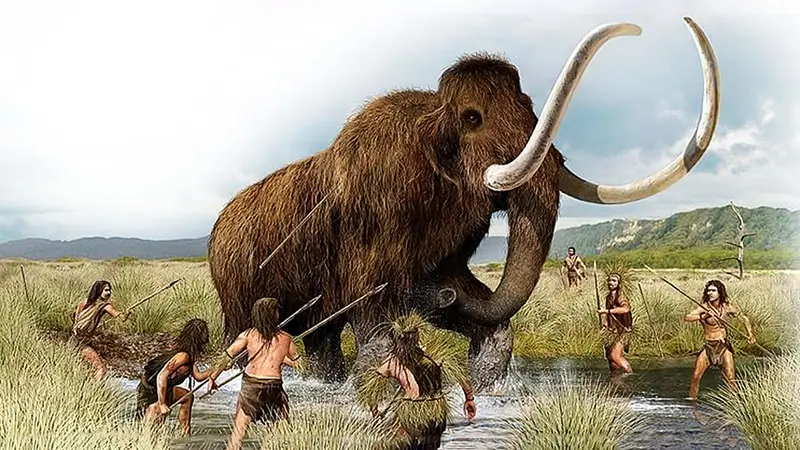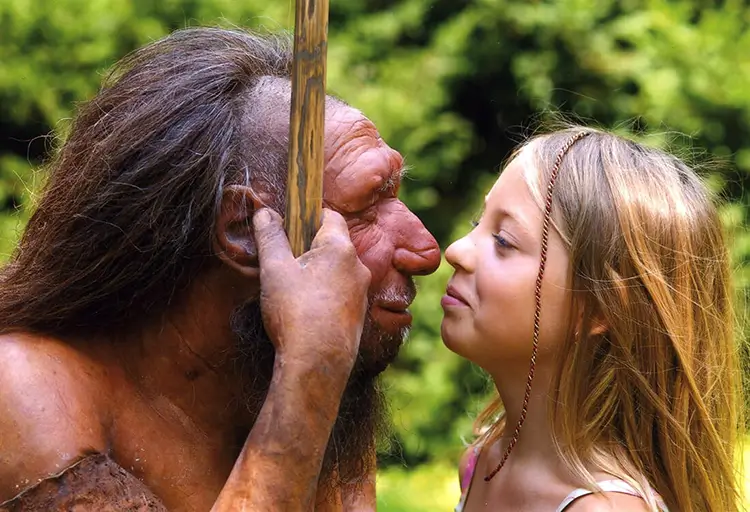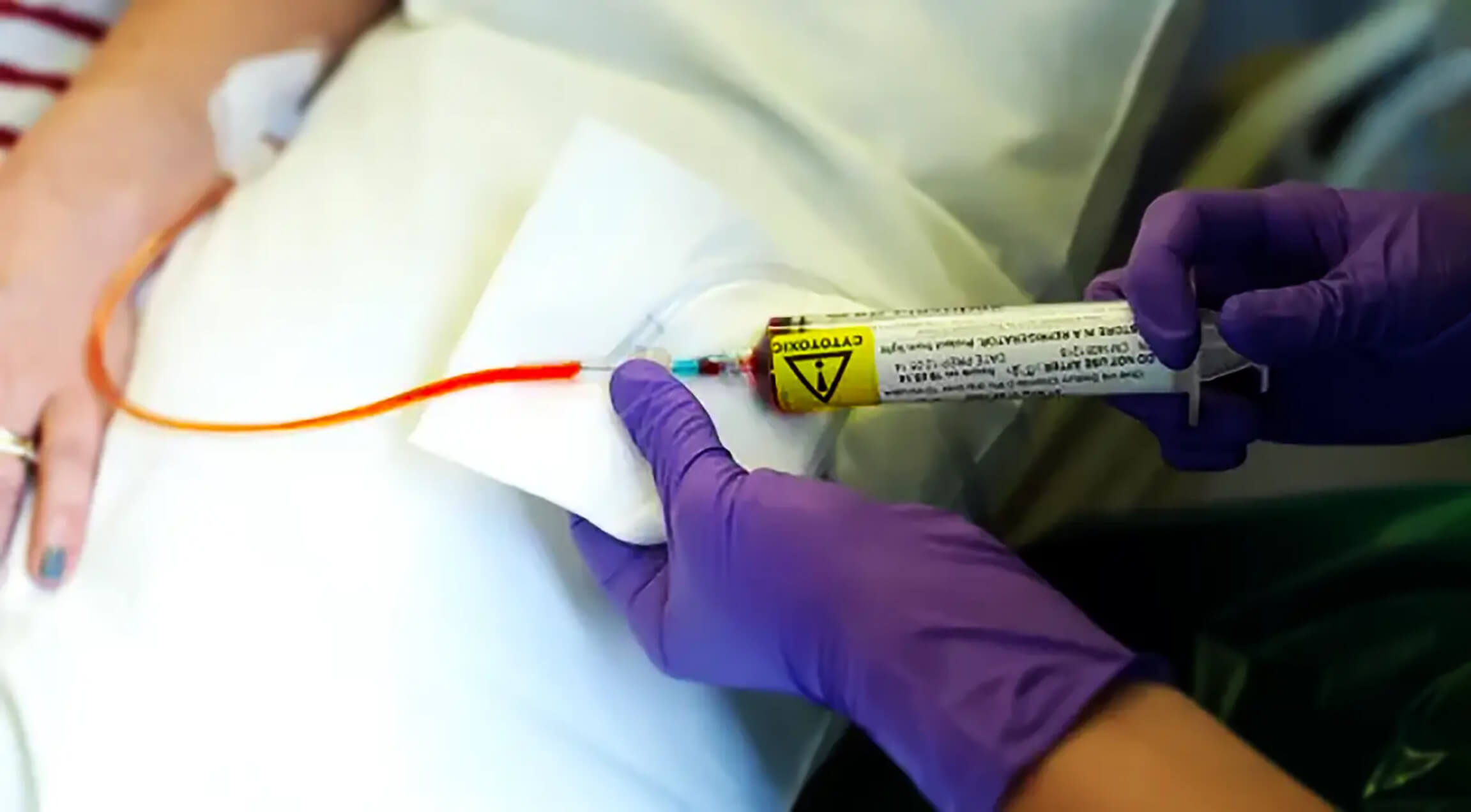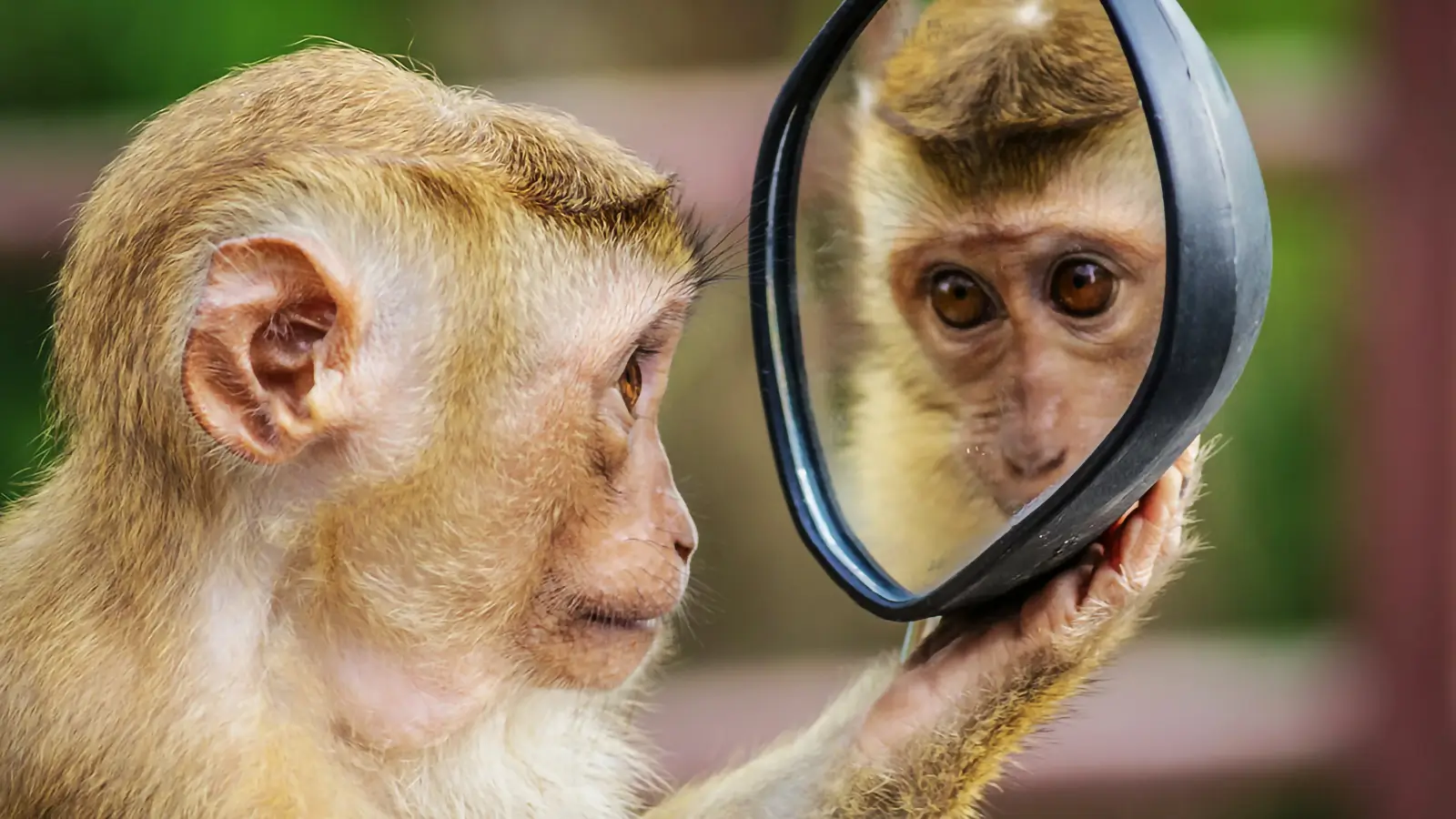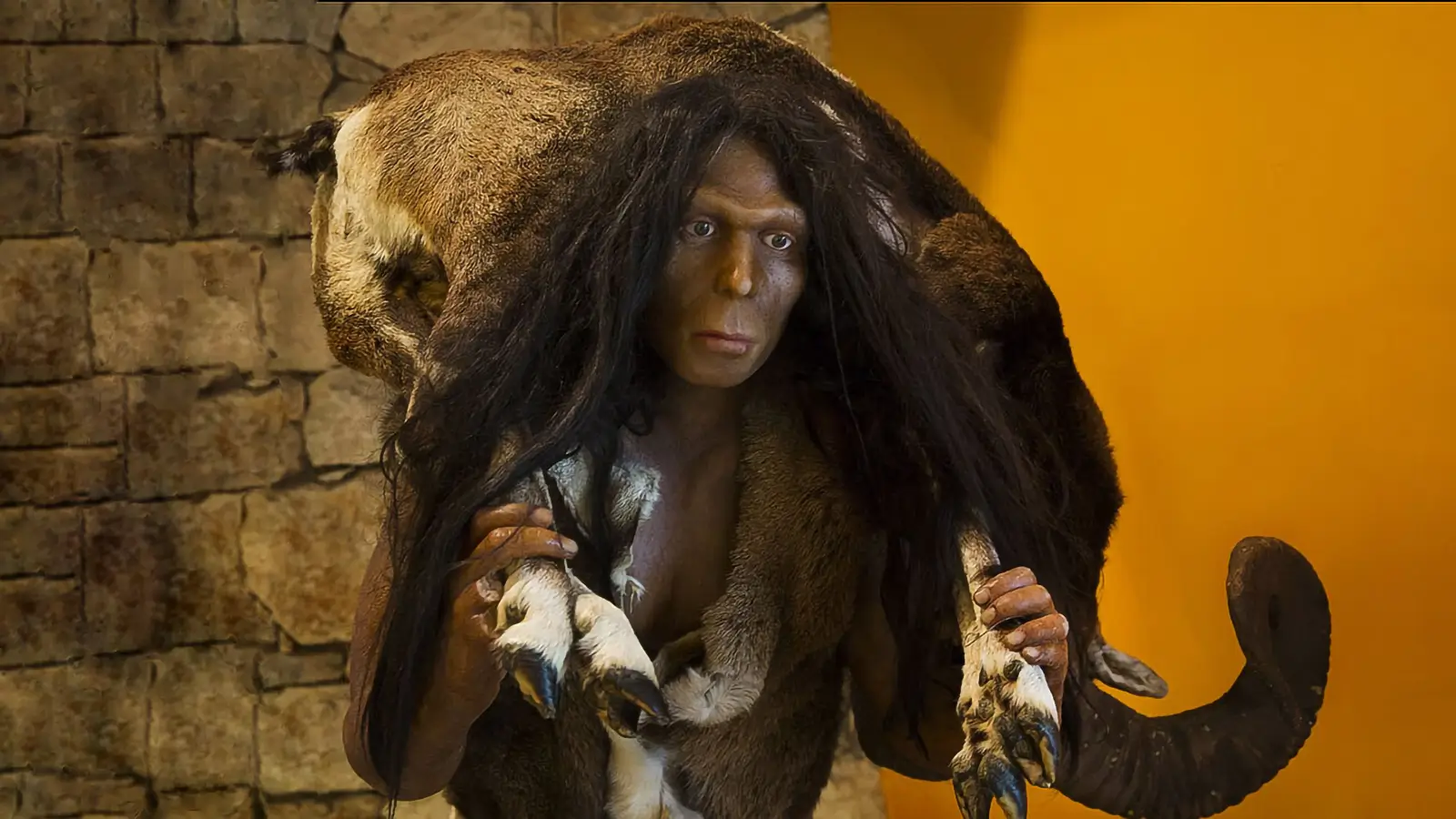Vegano Neandertales? La verdad acerca de la dieta de los Neandertales
Una representación típica de los neandertales los imagina matando al mamut lanudo. Sin embargo, una placa dental cuenta una historia diferente sobre la dieta neandertal.
Milos Pokimica
Escrito por: Milos Pokimica
Revisado Médicamente Por: Dr. Xiùying Wáng, M.D.
Actualizado el 9 de junio de 2023La representación estereotipada de los neandertales los muestra matando al mamut lanudo. Existen pruebas arqueológicas que respaldan la tesis de que la dieta de los neandertales era carnívora incluso al mismo nivel que la de los osos polares, lo que incluía comidas ricas en grandes herbívoros como el mamut lanudo, el reno y el rinoceronte lanudo.
Sin embargo, los dientes neandertales cuentan una historia diferente. La placa dental sirve para analizar los almidones y proteínas que se conservaban en ella. Cuando se investigan, los patrones de desgaste de sus dientes sugieren una dieta variada. La dieta también variaba en función de la ubicación, con importantes diferencias regionales. En algunas zonas, los estudios indican que los neandertales consumían sobre todo plantas, posiblemente incluso medicinales.
El importante descubrimiento se produjo cuando los científicos analizaron los restos de neandertales de El Sidrón (España). Los neandertales de El Sidrón mostraban cero signos de consumo de carne. No una pequeña cantidad, sino un cero absoluto. En lugar de carne, obtenían calorías de alimentos vegetales recogidos en el bosque. La placa dental estaba llena de restos de diferentes tipos de frutos secos, setas y musgo. Neandertales veganos, ¿cómo podría encajar eso en la típica imagen aceptada? ¿Qué hay de las proteínas y la b12?
La placa dental es una herramienta muy útil porque permite conservar el material genético de los alimentos que consumen los animales para su análisis. Laura Weyrich, de la Universidad de Adelaida, y un equipo de investigadores lograron obtener una visión sorprendentemente precisa de las especies vegetales y animales que consumían los neandertales. Analizaron tres muestras. Dos de los fósiles obtenidos procedían de la cueva de El Sidrón, en España, incluido el posible consumidor de aspirina, mientras que uno procedía de la cueva de Spy, en Bélgica (Cueva del Sidrón- Wikipedia). El análisis demostró una vez más la completa diversidad de alimentos en función de la ecología del hábitat local, en consonancia con la teoría del forrajeo óptimo (OFT).
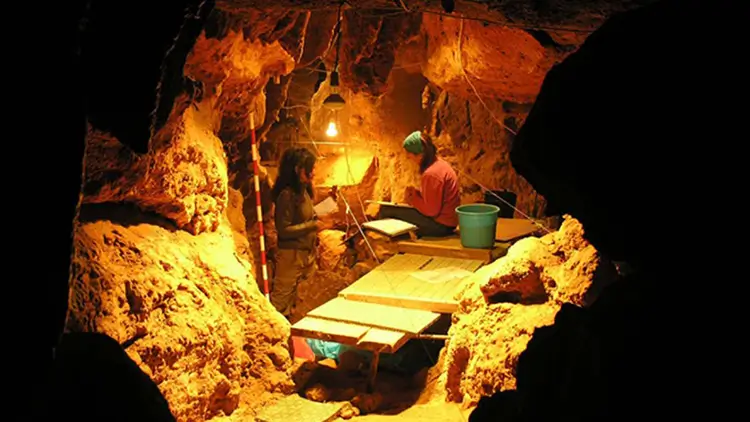
La dieta neandertal no existía en esencia. La dieta dependía del lugar donde vivían los neandertales en cuestión. Los belgas, por ejemplo, seguían una dieta rica en carne porque no tenían otra opción. Se descubrió material genético de ovejas salvajes, rinocerontes lanudos y algunas setas en la placa dental, así como algunos huesos de caballos, mamuts, renos y rinocerontes en la cueva. Los huesos cuentan la misma historia que la placa dental: estos grupos eran cazadores. En el hábitat belga, no recolectaban alimentos vegetales porque no había ninguno. Tuvieron que adaptarse para sobrevivir al clima frío y árido cazando. Probablemente tampoco les gustaba demasiado.
Los neandertales españoles parecían tener una vida más cómoda. Eran neandertales hippies, vegetarianos y relajados. La verdad sobre la dieta real de los neandertales es que comían sobre todo setas, piñones, musgo y otros tipos de alimentos que obtendríamos forrajeando en un bosque. Por lo tanto, los neandertales del norte eran cazadores y los del sur, recolectores.
¿Qué nos dicen estas pruebas? Uno de los neandertales de España parecía tener un absceso dental y una infección estomacal y se automedicaba con álamo (Populus alba), un analgésico natural que contiene ácido salicílico, el mismo principio activo de la aspirina. El individuo también había consumido el moho Penicillium, productor de antibióticos. Es decir, decenas de miles de años antes de que el Dr. Alexander Fleming utilizara una cepa de Penicillium para desarrollar el primer antibiótico, revolucionando la medicina moderna. Si queremos hablar de los fundadores de la medicina, ¿qué tal los antibióticos y las aspirinas de los neandertales?
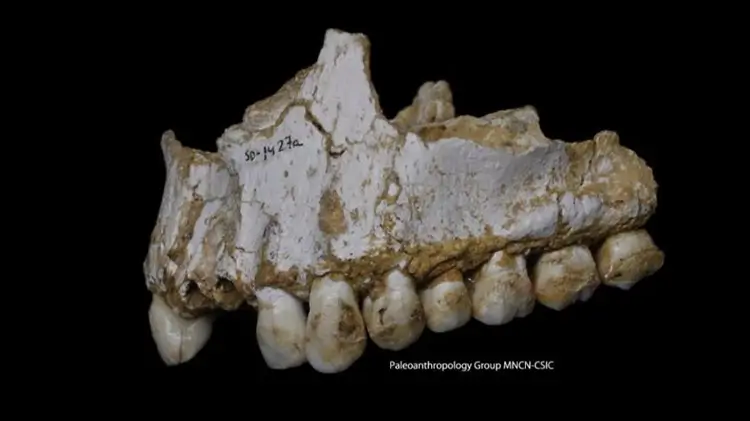
Hubo otra cosa interesante. El equipo de Weyrich también logró secuenciar completamente un microbio concreto llamado Methanobrevibacter oralis, que carece de genes para resistir los antisépticos y digerir la maltosa. Con el tiempo, este microbio se ha adaptado a la higiene y a los cambios en la dieta humana. El equipo de Weyrich calculó que la cepa neandertal se separó de las que se encuentran en los humanos modernos hace entre 112 000 y 143 000 años, lo que sugiere que los dos grupos probablemente intercambiaban Methanobrevibacter cuando tenían relaciones sexuales.
¿Por qué los grupos de neandertales que viven en el sur son veganos? Probablemente porque pueden. Había un entorno mucho más amigable y un clima más suave con más fuentes de alimentos. Los neandertales veganos no son un grupo moral de individuos que decidieron ser vegetales como una elección personal de identidad. Es una elección de supervivencia. Si tuviéramos algo que pudiéramos comer creciendo junto a nuestra cueva, ¿iríamos de caza? Sólo aplicando las estrategias óptimas de forrajeo, tenemos la respuesta. Los neandertales eran anatómicamente más veganos que carnívoros, pero en las zonas septentrionales durante la Edad de Hielo, el clima era duro y tuvieron que adaptarse y eso les llevó algún tiempo. Tanto los neandertales como los humanos modernos evolucionaron a partir del Homo erectus. El Homo erectus era una especie herbívora. Las primeras oleadas migratorias conocidas de H. Erectus hacia Eurasia datan de hace 1,81 millones de años. La investigación genética del reloj molecular había situado el tiempo de divergencia de los linajes neandertal y humano moderno entre 800.000 y 400.000 años atrás. Por este motivo, la mayoría de los estudiosos creen que los neandertales descienden, vía Homo heidelbergensis. La población de Homo erectus que permaneció en África habría evolucionado, a través del Homo rhodesiensis intermedio, hacia los humanos anatómicamente modernos hace 300.000 años o antes.
Los neandertales evolucionaron en Europa y los humanos lo hicieron en África y existen algunas pequeñas diferencias fisiológicas. Los Homo sapiens tienen torsos acampanados más pequeños y pelvis más estrechas. Los neandertales tenían torsos acampanados y pelvis más anchas. La explicación convencional ha sido que los neandertales necesitaban más oxígeno debido al clima más frío, por lo que sus cuerpos crecieron para albergar un sistema respiratorio más grande. Pero esto es erróneo. Viviendo en el frío clima de Eurasia hace entre 300.000 y 30.000 años, los neandertales se asentaron en lugares como los Urales polares y el sur de Siberia. En medio de un invierno en la tundra, sin fuentes de alimentos vegetales, la carne animal hecha de grasa y proteínas seguía siendo la única fuente de energía. Aunque la grasa es más fácil de digerir, escasea en condiciones de frío. Los animales de presa quemaban sus reservas de grasa durante el invierno y adelgazaban mucho. Hay que llegar a la conclusión de que los neandertales debían de comer mucha proteína animal.
Las proteínas plantean enormes exigencias en los riñones y el hígado para eliminar algunos de los subproductos tóxicos generados al quemarla para obtener energía. Los seres humanos tenemos un límite máximo de proteínas de entre el 35 y el 50 % de las calorías de nuestra dieta. Consumir mucho más que eso puede ser peligroso. Los cuerpos de los neandertales encontraron una forma de utilizar más proteínas agrandando el hígado y los riñones. El pecho y la pelvis también se ensancharon para dar cabida a estos órganos reforzados, lo que les dio un aspecto distintivo. Si observamos hoy en día a los pueblos inuit, su dieta se basa a veces exclusivamente en carne y tienen hígados y riñones más grandes y costillas más largas que la media de los europeos. Para sobrevivir a la escasez de grasa, los neandertales sin duda también se especializaron en la caza de animales de gran tamaño, como los mamuts. Estos conservan la grasa durante más tiempo en condiciones adversas y requieren menos energía y velocidad para matarlos que las presas más pequeñas y rápidas. Los mamuts son demasiado grandes para escapar o evadir, y solo tenemos que matar uno para alimentarnos durante meses, ya que la carne no se echa a perder a temperaturas constantemente bajo cero. Pero a medida que estas mega bestias desaparecieron, los neandertales probablemente lucharon por cazar presas más pequeñas y rápidas. En la parte sur, como España, siguieron la antigua costumbre vegana.
¿Qué nos dice todo esto sobre nosotros? Durante los milenios que vivimos en el clima septentrional de la Edad de Hielo, no tuvimos que adaptarnos a una dieta rica en carne en cierta medida. Evolucionamos en África a partir de un linaje vegano basado en plantas de 60 millones de años. Los humanos modernos abandonaron África por primera vez hace 100 000 años en una serie de oleadas migratorias de ritmo lento y llegaron al sur de Europa hace unos 80 000-90 000 años.
Por lo tanto, ¿cuál es la verdadera dieta paleo?
Referencias:
Pasajes seleccionados de un libro: Pokimica, Milos. Go Vegan? Examen de Ciencias de la Parte 1. Kindle ed., Amazon, 2018.
Contenidos Relacionados
¿Tienes alguna duda acerca de la nutrición y la salud?
Me encantaría saber de usted y responderlas en mi próxima publicación. Agradezco sus aportes y opiniones y espero tener noticias suyas pronto. También te invito a síguenos en Facebook, Instagram y Pinterest para más contenidos sobre dieta, nutrición y salud. Puedes dejar un comentario allí y conectar con otros entusiastas de la salud, compartir tus consejos y experiencias, y recibir apoyo y ánimo de nuestro equipo y nuestra comunidad.
Espero que este post le haya resultado informativo y ameno y que esté preparado para aplicar los conocimientos adquiridos. Si le ha resultado útil, por favor compártelo con tus amigos y familiares que también podrían beneficiarse de ella. Nunca se sabe quién puede necesitar orientación y apoyo en su camino hacia la salud.
– También Te Puede Interesar –

Aprenda Sobre Nutricion
Milos Pokimica es doctor en medicina natural, nutricionista clínico, escritor sobre salud médica y nutrición y asesor en ciencias de la nutrición. Autor de la serie de libros Go Vegan? Revisión de la Ciencia, también dirige el sitio web sobre salud natural GoVeganWay.com.
Descargo De Responsabilidad Médica
GoVeganWay.com le ofrece reseñas de las últimas investigaciones relacionadas con la nutrición y la salud. La información proporcionada representa la opinión personal del autor y no pretende ni implica sustituir el asesoramiento, diagnóstico o tratamiento médico profesional. La información proporcionada tiene fines informativos únicamente y no pretende sustituir la consulta, el diagnóstico y/o el tratamiento médico de un médico o proveedor de atención médica calificado.NUNCA ignore el CONSEJO MÉDICO PROFESIONAL O RETRASAR la BÚSQUEDA de TRATAMIENTO MÉDICO a CAUSA DE ALGO QUE HAYA LEÍDO EN O accesibles a TRAVÉS de GoVeganWay.com
NUNCA APLICAR CUALQUIER cambio de ESTILO de vida O CAMBIOS EN su totalidad COMO UNA CONSECUENCIA DE ALGO QUE HA LEÍDO EN GoVeganWay.com ANTES de CONSULTAR con LICENCIA PROFESIONAL MÉDICO.
En el caso de una emergencia médica, llame a un médico o al 911 inmediatamente. GoVeganWay.com no se recomienda ni aprueba ninguna de los grupos, las organizaciones, las pruebas, los médicos, productos, procedimientos, opiniones u otra información que pueda ser mencionado en el interior.
Selecciones del editor –
Milos Pokimica es escritor especializado en salud y nutrición y asesor en ciencias nutricionales. Autor de la serie de libros Go Vegan? Revisión de la Ciencia, también dirige el sitio web sobre salud natural GoVeganWay.com.
Últimos artículos -
Top Noticias De Salud — ScienceDaily
- Stanford scientists uncover why mRNA COVID vaccines can trigger heart inflammationen diciembre 27, 2025
Stanford scientists have uncovered how mRNA COVID-19 vaccines can very rarely trigger heart inflammation in young men — and how that risk might be reduced. They found that the vaccines can spark a two-step immune reaction that floods the body with inflammatory signals, drawing aggressive immune cells into the heart and causing temporary injury.
- A rare cancer-fighting plant compound has finally been decodeden diciembre 27, 2025
UBC Okanagan researchers have uncovered how plants create mitraphylline, a rare natural compound linked to anti-cancer effects. By identifying two key enzymes that shape and twist molecules into their final form, the team solved a puzzle that had stumped scientists for years. The discovery could make it far easier to produce mitraphylline and related compounds sustainably. It also highlights plants as master chemists with untapped medical potential.
- Cancer cells depend on a dangerous DNA repair tricken diciembre 27, 2025
Researchers have discovered how cells activate a last-resort DNA repair system when severe damage strikes. When genetic tangles overwhelm normal repair pathways, cells flip on a fast but error-prone emergency fix that helps them survive. Some cancer cells rely heavily on this backup system, even though it makes their DNA more unstable. Blocking this process could expose a powerful new way to target tumors.
- Eating more vitamin C can physically change your skinen diciembre 26, 2025
Vitamin C doesn’t just belong in skincare products—it works even better when you eat it. Scientists discovered that vitamin C from food travels through the bloodstream into every layer of the skin, boosting collagen and skin renewal. People who ate two vitamin C–packed kiwifruit daily showed thicker, healthier skin. The findings suggest glowing skin really does start from within.
- Why some people keep making the same bad decisionsen diciembre 26, 2025
Everyday sights and sounds quietly shape the choices people make, often without them realizing it. New research suggests that some individuals become especially influenced by these environmental cues, relying on them heavily when deciding what to do. The problem arises when those cues start leading to worse outcomes. For certain people, the brain struggles to update these learned signals, causing them to repeat risky or harmful decisions over time.
- This common food ingredient may shape a child’s health for lifeen diciembre 26, 2025
Scientists discovered that common food emulsifiers consumed by mother mice altered their offspring’s gut microbiome from the very first weeks of life. These changes interfered with normal immune system training, leading to long-term inflammation. As adults, the offspring were more vulnerable to gut disorders and obesity. The findings suggest that food additives may have hidden, lasting effects beyond those who consume them directly.
- A surprising brain cleanup reduced epileptic seizures and restored memoryen diciembre 26, 2025
A new study suggests temporal lobe epilepsy may be linked to early aging of certain brain cells. When researchers removed these aging cells in mice, seizures dropped, memory improved, and some animals avoided epilepsy altogether. The treatment used drugs already known to science, raising the possibility of quicker translation to people. The results offer new hope for patients who do not respond to existing medications.
PubMed, #Dieta vegana –
- Biomarkersen diciembre 26, 2025
CONCLUSION: Findings suggest that PBDs may be associated with blood-based AD biomarkers, independent of age of sex. Higher plasma levels of Aβ1-42/Aβ1-40 in PBDs compared to RMEs, indicated that PBDs might be associated with lesser amyloid burden. However, higher levels of other plasma AD biomarkers were present in some PBDs compared to RMEs. Future studies should aim to examine associations between specific nutrients and biomarkers of AD to further elucidate the role of diet quality and…
- The effect of a vegan diet with or without resistance exercise on thigh muscle volume in older adults. Research protocol of the Vold-study: a 12-week randomized controlled trialen diciembre 26, 2025
BACKGROUND: Plant-based diets are increasingly adopted. Plant-based foods exhibit a lower protein quantity and quality compared to animal-based foods. As such, a fully plant-based, i.e. vegan, diet may be suboptimal for the maintenance of skeletal muscle mass later in life. The primary objectives of this study protocol are therefore: (1) To assess the effect of a 12-week self-composed vegan diet in comparison to an omnivorous diet on thigh muscle volume in community-dwelling older adults; and…
- Dementia Care Research and Psychosocial Factorsen diciembre 25, 2025
CONCLUSION: Around 2% of the world’s population is homozygous for APOE4, making it increasingly rare for three siblings within one family to present with this genetic makeup, two of whom go on to develop early onset Alzheimer’s disease. Further medical testing is warranted regarding the current patient’s cognitive status and biomarkers for Alzheimer’s Disease. This case study could contribute to a greater understanding of protective lifestyle changes that delay Alzheimer’s disease, […]
- Comparing diet-related attitudes, perceptions, and behaviors of vegan and omnivorous adults: results from a cross-sectional survey study in Germanyen diciembre 22, 2025
CONCLUSION: The findings are consistent with and build on existing research on cognitive and behavioral patterns related to a vegan diet, while at the same time yielding some additional insights. In particular, the results on significant differences in the risk-benefit perception of a vegan diet, as well as on motivations and influences regarding the decision to follow a vegan diet provide an important basis for the development of public health interventions and a foundation for further […]
- Assessment of vitamin A, vitamin B2, vitamin B12, vitamin K, folate, and choline status following 4 months of multinutrient supplementation in healthy vegans: a randomised,…en diciembre 19, 2025
CONCLUSION: A multinutrient supplement containing 82 µg of vitamin B(12) per day significantly positively affected vitamin B(12) blood biomarkers in healthy vegans.
Publicaciones aleatorias –
Publicaciones destacadas -
La última versión desde PubMed, #Dieta basada en plantas –
- Plant-based protein for older adults with obesitypor Sophie L van Oppenraaij en diciembre 26, 2025
The global syndemic of obesity, undernutrition, and climate change – three interconnected challenges – threatens both human and planetary health. This review focuses on one critical intersection: older populations living with overweight and obesity in the context of sustainable nutrition. Obesity and sarcopenia, particularly the co-occurrence called sarcopenic obesity, are often overlooked until the onset or exacerbation of other diseases necessitates secondary care. Preventing sarcopenic…
- Biomarkerspor Shaun Eslick en diciembre 26, 2025
CONCLUSION: Findings suggest that PBDs may be associated with blood-based AD biomarkers, independent of age of sex. Higher plasma levels of Aβ1-42/Aβ1-40 in PBDs compared to RMEs, indicated that PBDs might be associated with lesser amyloid burden. However, higher levels of other plasma AD biomarkers were present in some PBDs compared to RMEs. Future studies should aim to examine associations between specific nutrients and biomarkers of AD to further elucidate the role of diet quality and…
- Biomarkerspor Klodian Dhana en diciembre 26, 2025
CONCLUSION: This study showed that dietary intervention influences longitudinal changes in plasma Abeta 42/40 levels. Compared to the MIND diet group, individuals in the control group showed a modest decline in plasma Abeta 42/40 levels, suggesting that the MIND diet intervention may reduce Alzheimer’s disease pathology in the brain and, potentially, the risk of ADRD.
- The effect of a vegan diet with or without resistance exercise on thigh muscle volume in older adults. Research protocol of the Vold-study: a 12-week randomized controlled trialpor Jacintha Domić en diciembre 26, 2025
BACKGROUND: Plant-based diets are increasingly adopted. Plant-based foods exhibit a lower protein quantity and quality compared to animal-based foods. As such, a fully plant-based, i.e. vegan, diet may be suboptimal for the maintenance of skeletal muscle mass later in life. The primary objectives of this study protocol are therefore: (1) To assess the effect of a 12-week self-composed vegan diet in comparison to an omnivorous diet on thigh muscle volume in community-dwelling older adults; and…
- Seasonal Dietary Patterns of Tarim Red Deer (Cervus hanglu yarkandensis) Revealed by the trnL Sequencing Approach in the Tarim River Basin (Xinjiang, China)por Cheng Qi en diciembre 25, 2025
The Tarim red deer (Cervus hanglu yarkandensis) is a flagship species inhabiting the Euphrates poplar (Populus euphratica) riparian forests along the Tarim River in China. It is listed as a Class I nationally protected species but despite its importance, current knowledge about this subspecies remains limited, particularly regarding the seasonal variation in its foraging ecology within the Shaya region of Xinjiang-a landscape characterized by a mosaic of Euphrates poplar forests interspersed…
- The potential of immature jackfruit in meat analoguespor Anne C M Swinkels en diciembre 24, 2025
The jackfruit, the fruit of the jackfruit tree ( Artocarpus heterophyllus ), is a unique tropical fruit. While sweet and fruity in its ripe form, in its immature form, the jackfruit flesh mimics the texture of meat, making it an increasingly popular plant-based meat analogue. To reach its full potential as an ingredient for meat analogues, a better understanding of the immature fruit properties in relation to its behaviour in food products is required. This review focuses on immature […]
